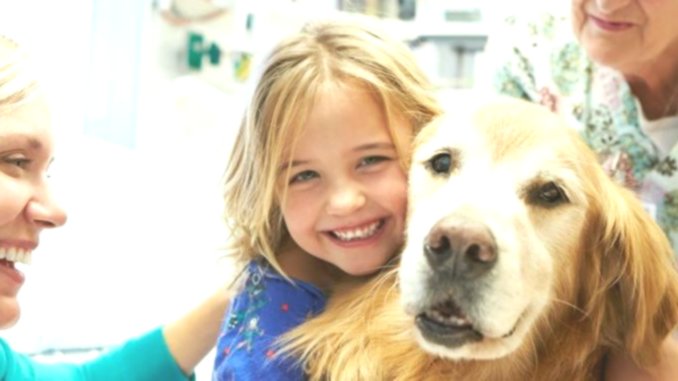

Clinical studies have shown that animal-assisted therapy promises success. In 2015, the Journal of Community and Supportive Oncology reported on improving the emotional well-being and quality of life of patients. But what does that mean in concrete terms and what are the findings of therapy with animals for children with cancer?
Content:
- Attempts underpin success
- The animal mediator
- Risks and limits
- The question of costs
Attempts underpin success
It is no secret that animals can have a calming and balancing effect on many people and actually do not need any scientific evidence. At least that’s what animal lovers will argue. The question is nevertheless important for the scientists, because the answers show them whether it makes sense to enable more people to come into contact with animals during cancer treatment. In the research mentioned above, emotional well-being and quality of life were observed using certified therapy dogs. It was shown that the presence of the dogs noticeably increases emotional well-being. This positive effect was seen even in patients who were otherwise otherwise unwell. Another observation was that the dogs brought more “humanity” to the stations. In addition, some patients reported that the dogs’ visits were the reason that they had not stopped the very stressful treatment. The dogs took away their existing fears, but also had a balancing effect. Animal-assisted therapies are not only carried out with dogs. Small animals such as rabbits can also be used and, under certain conditions, horses.
The animal mediator
Child cancer treatment focuses not only on the little patient, but also on their siblings. That is why siblings and parents are involved in animal-assisted therapies wherever possible. With an animal in the center of attention, the patient is no longer in constant focus, but the family strokes and feeds the animal together. This means an important break for everyone. The positive reaction of the animal also calms and promotes cohesion. So for a moment there is something else besides the illness and the associated worries.
Risks and limits
There are limits to animal-assisted therapy for both humans and animals. There is no question that severely immunodeficient patients can be excluded from such a measure. Also, not all institutions allow animals. In the USA, mini horses are used in clinics, which can be used to climb small stairs or be transported in an elevator. They set unusual impulses at the bedside and, thanks to their calm manner, also reach patients who are very limited in their perception. But this also shows that not every animal is suitable for such an application. Animals in therapy need a calm nature, excellent training and, of course, retreat. Normally, the animal seeks contact with humans on its own or avoids it – depending on their sympathy. In animal-assisted therapy, the animal makes active contact with humans on command. The patient’s movements can also be awkward. This must not scare the animal. The accompanying pet owner must therefore have very good knowledge of animal-assisted therapy and recognize the limits of the animal in good time. For example, dogs cannot be used for hours, but need breaks. This also applies to horses that are used in therapy. In Germany, the horse is an issue especially in children’s oncology, for example on nearby stables. A therapist sits on the horse – optionally also an experienced parent and the child in front of him. Stable children, however, are allowed to sit alone on the horse. The goal is for the little patient to feel the warmth, movement and strength of the animal, but also has the confidence to be carried by a much larger being. However, dolphin therapy is critically discussed. The contact is impressive and sustainable for people. From an animal welfare perspective, however, it is questionable whether a comparable effect cannot be achieved with pets that can read the body language of humans well due to domestication and that have been in close human care for their entire lives.
The question of costs
Animal-assisted therapy is largely done on a voluntary basis. Carriers are associations that are involved in this area and have the necessary specialist knowledge. Many volunteers work in nursing themselves and also make valuable contributions to accompanying seriously ill people. Of course, participation in such an offer is voluntary for the patients. Thanks to the very good experience, it is becoming more and more popular.